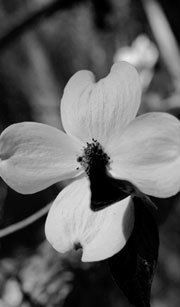 |
||
 |
||

 |
• HOME • GENERAL STORE • NATURAL HERITAGE • HISTORY, CULTURE & CRAFTSMANSHIP |
||||
|
Natural Heritage
• Trees & Shrubs of the Ozarks |
|||||
| Trees & Shrubs Index • Oak • Hickory • Walnut • Catalpa • Loblolly Pine • Red cedar • Elderberry • Sumac • Sassafras • Persimmon • Osage-orange • Mulberry • Witch Hazel • Sarvisberry • Dogwood • Redbud • Crape Myrtle • Mimosa Natural Heritage Index • Fishing • Hunting • Camping • Conservation • Bass Pro Blog • Hills & Hollows • Rivers & Lakes • Springs • Caves • Rocks & Fossils • Trees & Shrubs • Plants & Herbs • Hill Critters • Flyin' Critters • Water Critters • Snakes & Such • Forgotten Critters |
|||



American Elder / Elderberry (Sambucus canadensis)
Stands of American Elderberry are easy to spot in the roadsides and around abandoned farmsteads not only int he Ozarks but throughout much of North America.
Deciduous and all-but invasive, the American Elderberry shoots up easily with quick-growing, pithy sprouts reaching three to 10 feet in height. In spring, clusters of creamy white blossoms appear — the blossoms themselves may be battered, fried and dusted in cinnamon and sugar.
By late summer the groves of elderberry are heavy with purple-black berries, glistening in the hot summer sun. These berries — dark and staining — have been gathered for generations for wine, jelly, cordial, even dye for yarns.
European — and hillbilly — traditions even point to mystical powers of the humble elder.
A living bit of history in our own backyards and roadsides. The American Elderberry touches Ozarks culture from time immemorial.
Time to go berry picking!
Joshua Heston, editor
September 3, 2012
_______
Elderberry (Sambucus canadensis)
Size: 3 to 10 feet tall; leaves 4 to 9 inches long.
What to look for:leaves compound, usually with 7 elliptical, sharply toothed leaflets; flowers creamy white, in broad clusters; fruits berrylike, purple-black; twigs pithy, white inside.
Habitat: swamp edges; along fences and roads.
— page 330, Wernett, Susan J., et al. North American Wildlife. The Reader's Digest Association, Inc., 1986.
_______
From Vance Randolph...
“A great many of the old-timers call December 25 ‘New Christmas,’ in order to distinguish it from “Old Christmas” which falls on January 6. They tell me that in pioneer days nearly everybody celebrated Christmas twelve days later than they do now. Old folks say that elderberry always sprouts on the eve of Old Christmas — even if they ground is frozen hard, you’ll find the little green shoots under the snow.”
— page 77, Ozark Superstitions by Vance Randolph, Columbia University Press 1947
“Another funny thing, says Mr. Short, is that if you go out before midnight on New Year’s Eve and cut an elderbush off flush with the ground, by sunrise it will have ‘pooched up’ at least two inches.”
— page 20, Ozark Superstitions by Vance Randolph, Columbia University Press 1947

PLATE 4, Leaf detail

PLATE 5, A jar of elderberry jelly

PLATE 6, Spoonful of Summertime

PLATE 7, Elderberry cluster with petunias in the background
Elderberry photo plates
All photo credits: J. • SOTO © Archive. 06/12/10 & 08/15/10